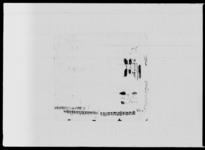A rukkā from King Surendra authorizing Rupi Hāṃ and other subbās to obtain and play nagarās (VS 1908)
ID: E_3345_0008
Edited and
translated by Julia Shrestha
in collaboration with
Rabi Acharya and Martin Gaenszle
Created: 2018-11-02;
Last modified: 2024-03-11
For the metadata of the document, click here
The accompanying edition, translation/synopsis and/or commentary are available under the terms of the Creative Commons Attribution-ShareAlike 4.0 International License
Abstract
This executive order (rukkā) from King Surendra authorizes Subbā Rupi Hāṃ, Subbā Gyāna Hāṃ and Subbā Rāmajīta of Chainpur Tamora Kholā to obtain and play nagarās like those played by the subbās of Dasa Limbuvān.Diplomatic edition
[1r]
1श्रीदुर्गाज्यू[Royal Seal]1स्वस्तिश्रीमन्महाराजाधिराज∙कस्यरुक्का ¯ ¯ ¯ ¯2आगे∙जिल्लैचैनपुरअम्वलमध्येतमोरषोलाकासुवारूपिहांसुवाज्ञानहांसुवारामजी
3तके∙अघिसेनमकव़ानीकापालादेषि∙आजसम्मसुवांगीहौदसलिम्वुवान्लेनगरापा
4या∙हामिहरुलेपनिनगरापाउन्याहुंभनि∙तिमिहरुलेहाम्राहजुरमा∙विंतिपार्दाजाहेर∙
5भयोअवउप्रान्त∙तिमिहरुलाइपनिदसलिम्वुवान्सुवाकासर्हमानगराकमाइ∙जंगी
6काजचल्दाभारदारकासाथरहिनगराचलाउनुभंन्यावन्देजकोलालमोहरगरिव∙
7क्स्यौंआफनाषातीर∙ज्मासंगनगराजानीचलंगरइतिसम्वत्१९०८साल
8मितिज्येष्ठसुदि१०रोज२सुभ्म् ¯¯¯¯¯¯¯¯¯¯¯¯¯¯¯¯¯¯
[1v]
11⟪नं.२८⟫⟪1नं•१३४८नगराचलाउने⟫1⟪१/६⟫1[?]2प•नं¯¯¯२ग.
3[?]¯¯¯[?]
4[?]¯¯¯[?]1वेवापनं¯¯¯[?]
2पोनं¯¯¯३१
3[?]¯¯¯[?]⟪1(१)⟫1मार्फत्जङ्गवहादूरकु़वरराणाजी1मार्फत्वँवाहादुरकुँ़वरराणाजी:-रुजुकृष्णवाहादुरकुँ़वरराणाजी
Translation
[1r]
Glorious Durgā!
[Royal Seal]
Hail! [This is] an executive order (rukkā) of the supreme king of great kings.1
Āge: To SubbāRupi Hāṃ, Subbā Gyāna Hāṃ, Subbā Rāmajīta of Tamora Kholā within the territory (ambala) of Chainpur (text: Cainapura) district.2
[The following] has come to our notice when you submitted a petition to us stating: "Previously, since the Makavānī Sena dynasty until today we have been of subbāṅgī (text: suvāṃgī)3 status. The Dasa Limbuvān obtained [the right to play] the nagarā. May we too obtain nagarās [and the right to play them]?"4 We have issued a lālamohara stating: "From now on (avauprānta), having earned the [right to] nagarās on an equal footing with the subbās of Dasa Limbuvān, you should play them during military activities [and while]5 in the company of bhāradāras. Play the nagarās mindful of your duty, conceiving them [as yours]."
Monday, the 10th of the bright fortnight of Jeṣṭha in the [Vikrama era] year 1908 (1851 CE). Auspiciousness.
[1v]
Through (mārphat) Jaṅga Bahādura Kũvara Rāṇājī, through Baṃ Bāhādura Kũvara Rāṇājī, [and] attested by (rujū) Kṛṣṇa Bāhādura Kũvara Rāṇājī
Commentary
This document is one of several rukkās issued in 1908 authorizing certain subbās6 of Chainpur to operate nagarā drums in military contexts (see E_3345_0009, E_3345_0010, E_3345_0011, E_3345_0012, E_3345_0013). The document cites an earlier appeal by the subbās named to obtain nagarās equal to the subbās of the Dasa Limbuvān. Before Pṛthvīnārāyaṇa Śāha's eastward extension to Sikkim, the far-eastern Kirata area of Limbuvān7 was nominally ruled by the Sena kings of Makwanpur. The Senas depended on the support of the Limbu chieftains, who remained autonomous in their own areas (Whelpton 2005: 24; Pradhan 2009: 78).
The nagarā is a large kettledrum played both in temple and in military ritual. The present document attests that the right to play a nagarā was bestowed as a military honour, allowing the subbās explicitly to join the company of high-ranking military officials or nobles (bhāradāras) on certain occasions. This military connection of the drums reaches back to their arrival on the subcontinent through Middle Eastern military bands (naqqāra khānā), whence they spread to Nepal very probably through Rajput migration from the 14th century onwards (Tingey 1994: 23). According to Tingey (ibid.: 28), the earliest evidence of nagarās in Nepal is a pair of dam nagarās at the Gorkha Palace, dated ŚS 1531 (1609 CE). As in the Middle Eastern and Indian contexts, the kettledrum was a symbol of rank and power, which could be conferred by the ruler (cf. Tingey 1994: 22). The honour of nagarā-nisāna (kettledrum and standards) was bestowed at least as early as the era of Pṛthvīnārāyaṇa (Tingey 1994: 28), but may have gone back further. The nagarā was probably played, among other things, to announce state proclamations (Tingey 1992: 101). Within Parbatiya society, nagarās were played by the Damāī̃ community (see Tingey 1994). While the office of Nagarci could enable some individuals to obtain certain wealth and powers (see, for example, documents in the present corpus of the catalogue relating to Bandhuva Damāī/Nagarci), providing musical services also kept the musicians' untouchable and servant status locked in place vis-à-vis their high-caste patrons. In the present document, the military honour of nagarās again seems double-edged: it appears as a sign of equal recognition being accorded to the petitioning subbās, while it just as obviously serves to identify them as servants to the Śāha kings. The fact that the nagarā otherwise plays no role in Limbu religious life further supports the assumption that it figures here as merely a political status symbol.8 The most important drum played in Limbu ritual is the chyābruṅ (Limbu ke), a large oblong two-headed drum played fixed to a cord around the player's neck. Receiving the nagarā as a status symbol can therefore be seen as the Limbu chiefs' recognition of the political semiotics of Śāha rule. They seem to have attached great importance to having nagarās bestowed on them, which may have been a sign of internal status rivalry among the chiefs.


